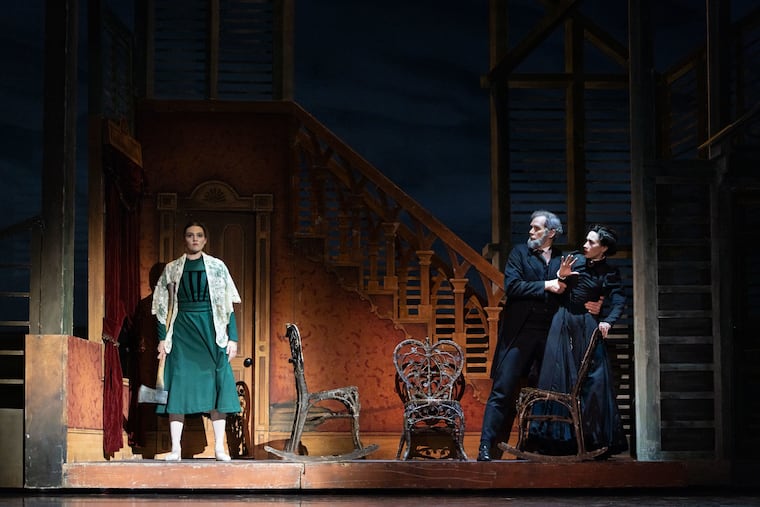Philadelphia Ballet presents two new ballets characterized as ghastly and nightmarish, with a positive reception from audiences.
The Philadelphia Ballet recently unveiled an ambitious production titled “Evening of Horror” at the Academy of Music, drawing attention for its departure from traditional ballet narratives. This innovative program showcased two major works: Agnes de Mille’s “Fall River Legend” and the world premiere of “Valley of Death” by resident choreographer Juliano Nunes. Both performances interwove theatricality with striking choreography, marking a significant departure from the well-trodden paths of classic ballets such as “The Nutcracker” and “Swan Lake.”
“Fall River Legend,” a company premiere, is a dramatic portrayal inspired by the infamous Lizzie Borden case of the late 19th century. In 1892, Borden was accused of axing her father and stepmother to death in Fall River, Massachusetts. The choreography captures the essence of Borden’s tumultuous story, particularly through the strong performance of Sydney Dolan, who portrays the titular role. Dolan, who joined the company at the age of 15, showcased remarkable depth as both an actor and dancer, vividly portraying Borden’s psychological turmoil amid her oppressive family environment. Notably, her interactions with the characters of her father and stepmother, portrayed by Gabriela Mesa and Charles Askegard, added significant emotional weight to the performance.
Complementing Dolan’s portrayal was Lucia Erickson, who excelled in the role of Young Lizzie, seamlessly mirroring her older counterpart’s anguish. The ballet’s atmospheric sets and lighting, complemented by Morton Gould’s evocative score, created a cinematic experience that reinforced the narrative’s emotional landscape.
Following “Fall River Legend,” Nunes presented “Valley of Death,” a contemporary ballet that opens with themes reminiscent of the classic “Giselle” before morphing into a nightmarish sequence. This new work, featuring music by composers Sergei Rachmaninoff and Ralph Vaughan Williams, follows an uninvited guest (danced with fierce intensity by Thays Golz) who disrupts a lavish ball hosted by a wealthy couple, creating an atmosphere of chaos and mystery. Golz’s dynamic performance injected a palpable sense of danger into the storyline, while principal dancers Zecheng Liang and Jacqueline Callahan adequately portrayed the tension between elegance and terror.
The production offered a refreshing take on the ballet genre, skillfully integrating elements of horror with traditional dance forms. The engagement of both emerging and established talents within the company highlighted the depth of skill within the Philadelphia Ballet. The decision to include works that diverge from the conventional repertoire reveals a commitment to innovation in the realm of ballet, suggesting a possible interest in continuing to explore thematic diversity in future seasons.
In summary, “Evening of Horror” not only showcased a blend of classical and contemporary ballet styles but also established a compelling narrative depth that set it apart from the usual offerings. Even as the traditional ballet framework remains a beloved staple, presentations like this hold promise for injecting fresh perspectives and excitement into the art form.
The “Philadelphia Ballet: Evening of Horror” ran on selected dates, including October 17 and 18 at 7:30 p.m., and a matinee show on October 19 at 2 p.m. Tickets were available for prices ranging from to 1, reflecting the production’s appeal to a diverse audience. For further details or inquiries, audiences were encouraged to visit the official website, ensembleartsphilly.org.







